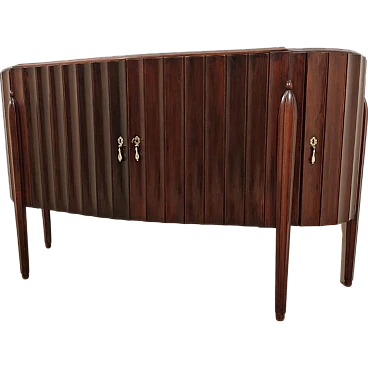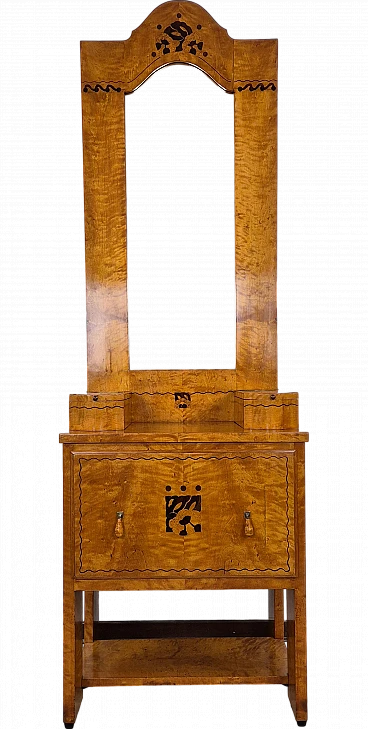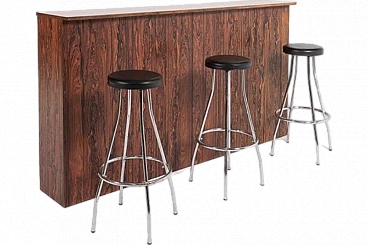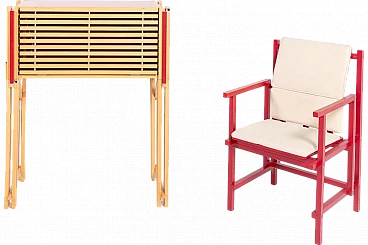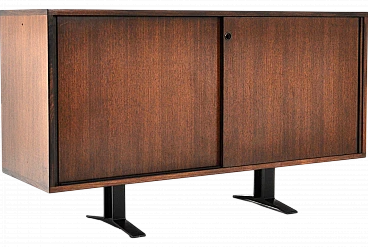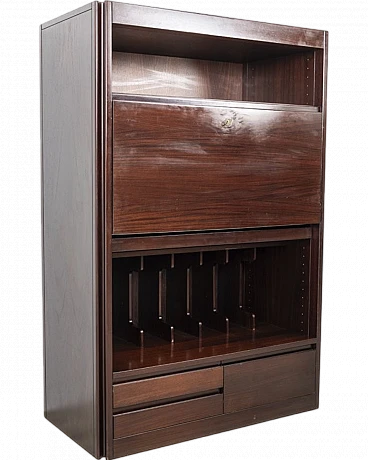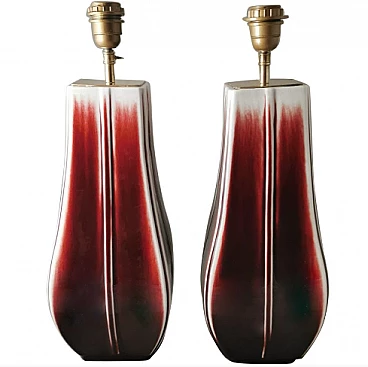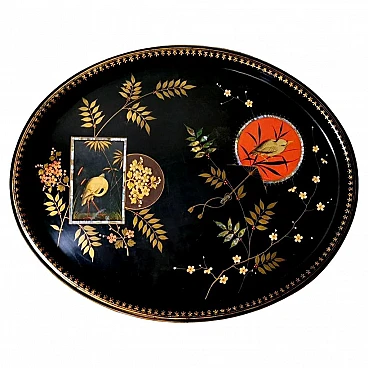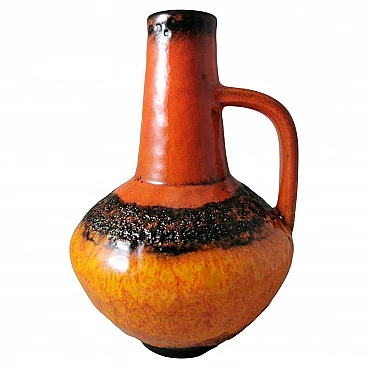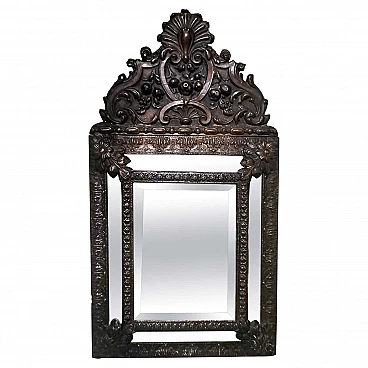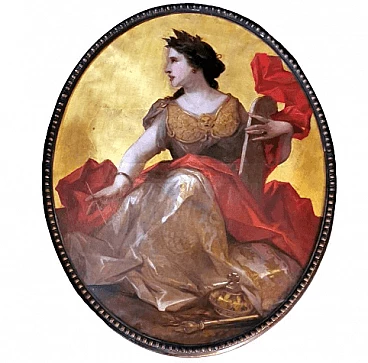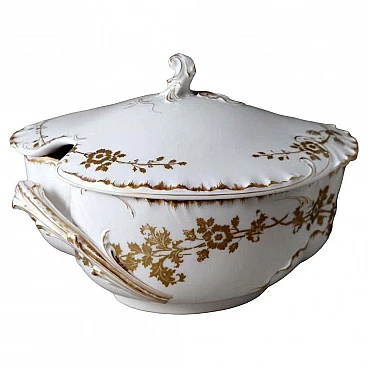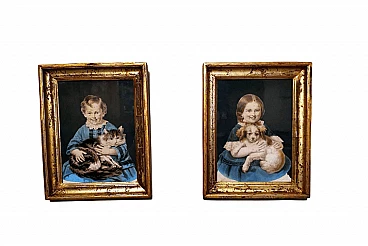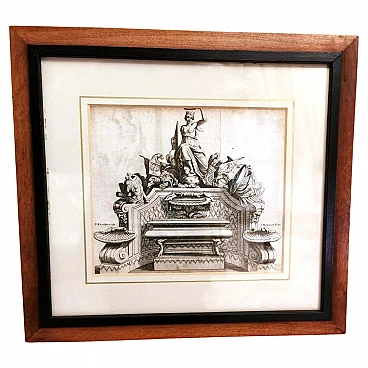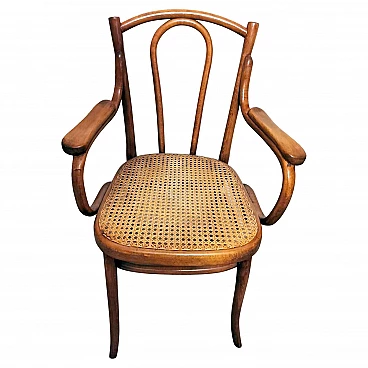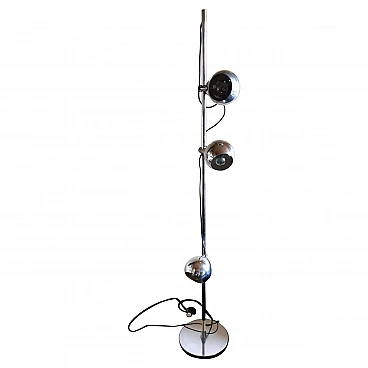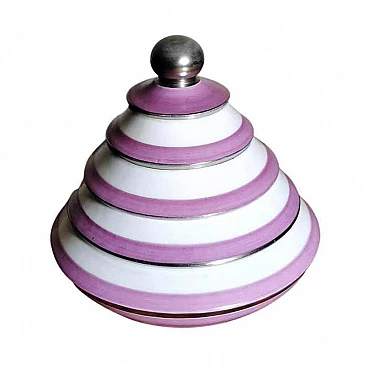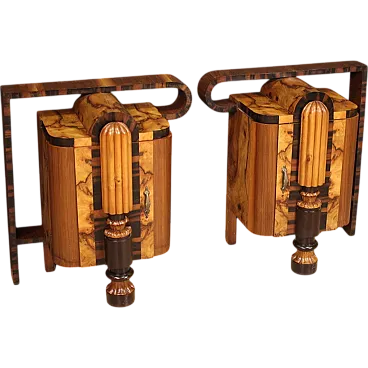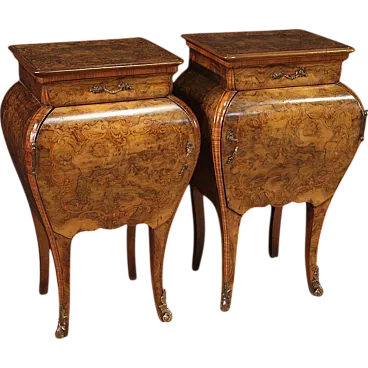Exceptional and valuable small Italian Biedermeier-style sideboard in Sapele wood with birch inlays. The solid top is rectangular and follows the profile of the cabinet; below it, there is a handy drawer with a handle. The large, functional space below is divided by a shelf and closed by a door with a handle. The practical gilded brass handles are concealed ring handles; the base is slightly contoured; overall, an essential and linear structure, but the cabinet has a unique and extraordinary charm thanks to the refined inlays that decorate it. On the front of the drawer are soft, elegant garlands held together by graceful fabric ribbons using the inlay (or marquetry) technique. On the door there is a slightly carved frame within which there is a decoration again with the garland theme, but much richer and more elaborate, skilfully balanced and well distributed. The uprights on either side of the door also have refined hollow carved rectangular frames that contribute to lightening the aesthetics and making the piece of furniture even more refined. A skilful master cabinetmaker executed this Biedermeier-style piece perfectly and meticulously between 1885 and 1890 in the area of Lendinara, in the province of Rovigo (Italy), one of the most prestigious furniture districts in the Veneto region. The artist succeeded in creating the delicate and refined birch inlays on the sapele base of the piece of furniture, creating an exceptional and exclusive colour contrast and creating a true work of art. The Biedermeier style, which arose after the Congress of Vienna and the decline of the Napoleonic empire, appealed in particular to the bourgeoisie with a desire for simple, functional furniture. The aim of the Biedermeier artistic movement was to exalt sobriety and harmony, modifying some of the stylistic motifs of the previous period, but stripping them of all the ornaments, frills and excesses that had characterised it. The inlay (or marquetry) technique has a very ancient history, from Egypt to Asia Minor; from there it spread to present-day Europe and Italy. It was in the period from the 14th to the 16th century that marquetry experienced its greatest splendour, and until 1550 it remained an exclusively Italian art form. Among the many workshops in northern Italy, that of the Canozi family of Lendinara (Rovigo), known as 'I Lendinara', to whom some associate the origins of the Carthusian marquetry technique, enjoyed considerable prestige. Inlaying (or marquetry) according to the Carthusian method is achieved by grafting decorative elements of different woods onto a solid wood base, designed, cut beforehand and shaped to fit perfectly with the hollow previously made on the base in which they will be housed. The right dimensions, symmetry, balanced proportions and precious inlays make our piece of furniture a valuable and versatile piece of furniture that can be placed in any type of environment without difficulty. The object has been hand-restored by our team of craftsmen and is in perfect condition. Measures width 71 cm, depth 50 cm, height 82 cm. For all our shipments we use special packaging materials (wooden crates, polystyrene, etc.) for maximum protection and safety of the objects.
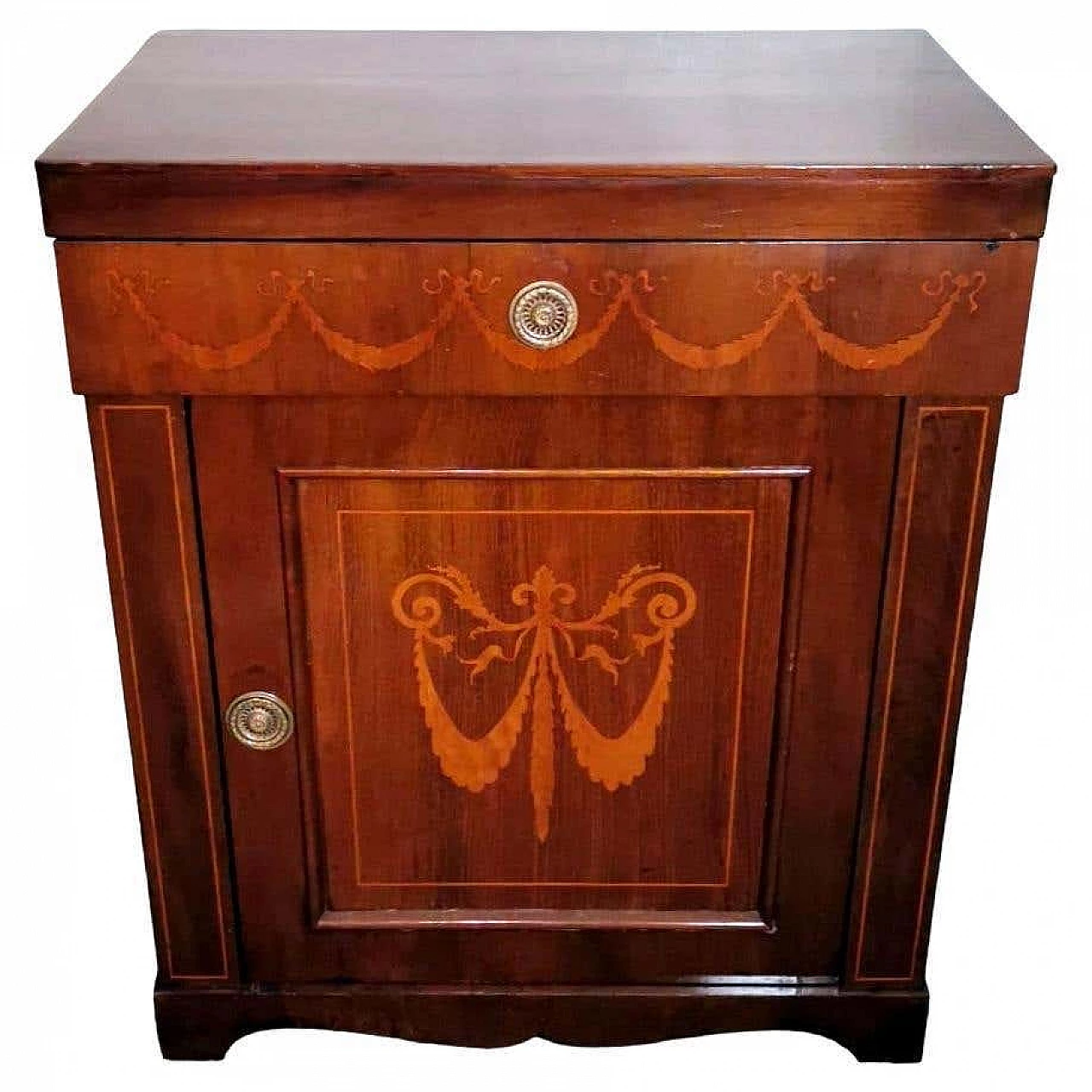
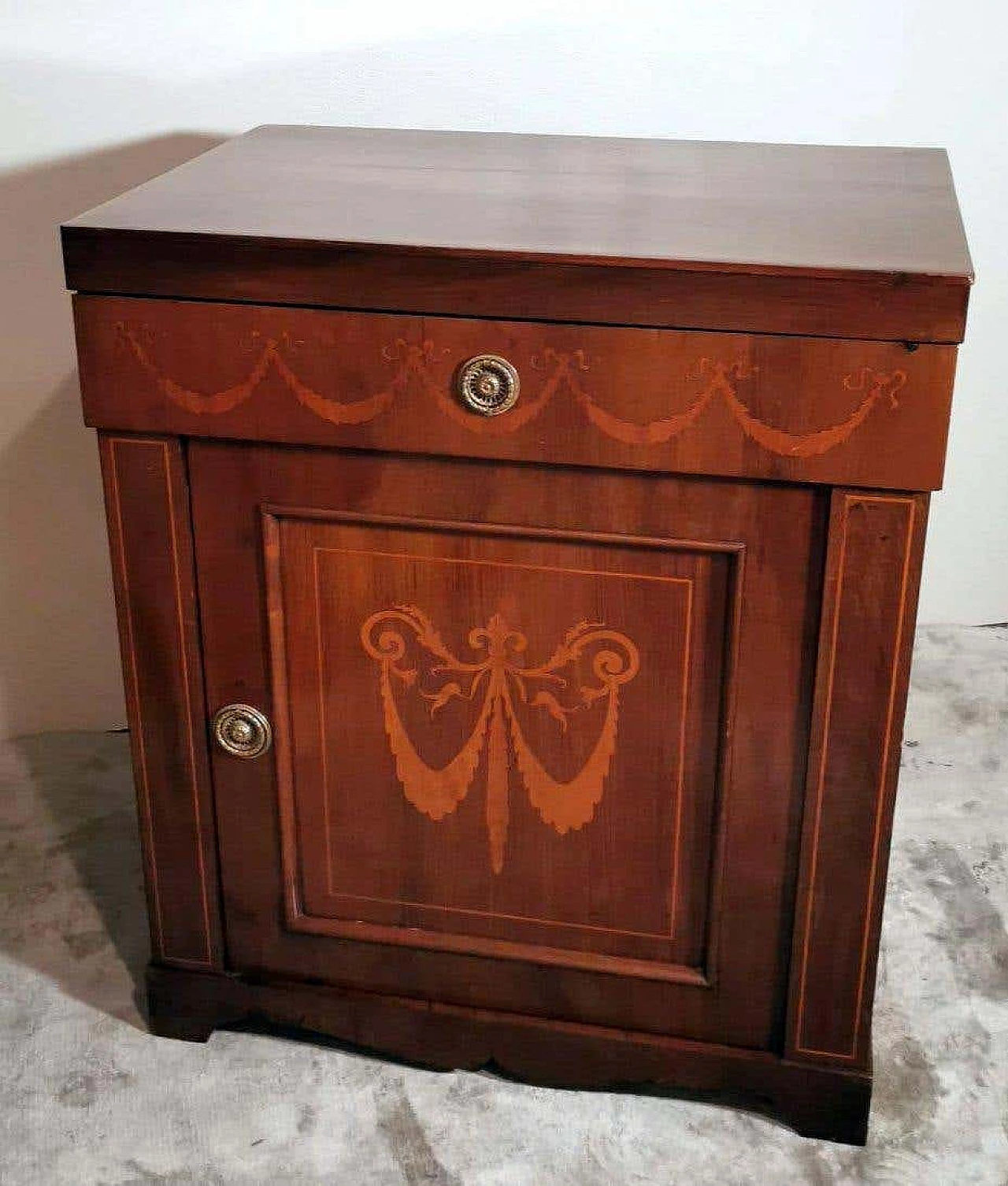
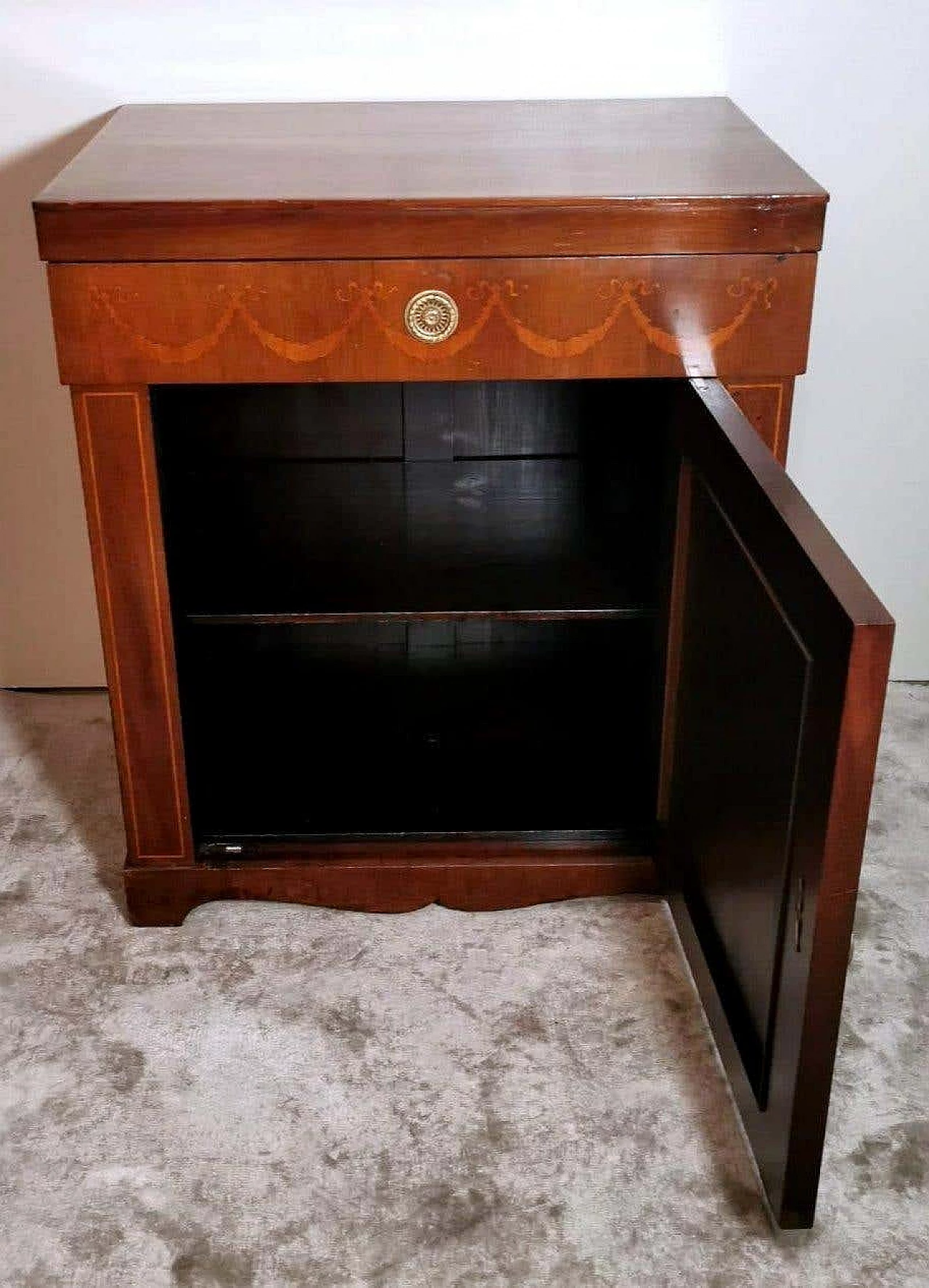
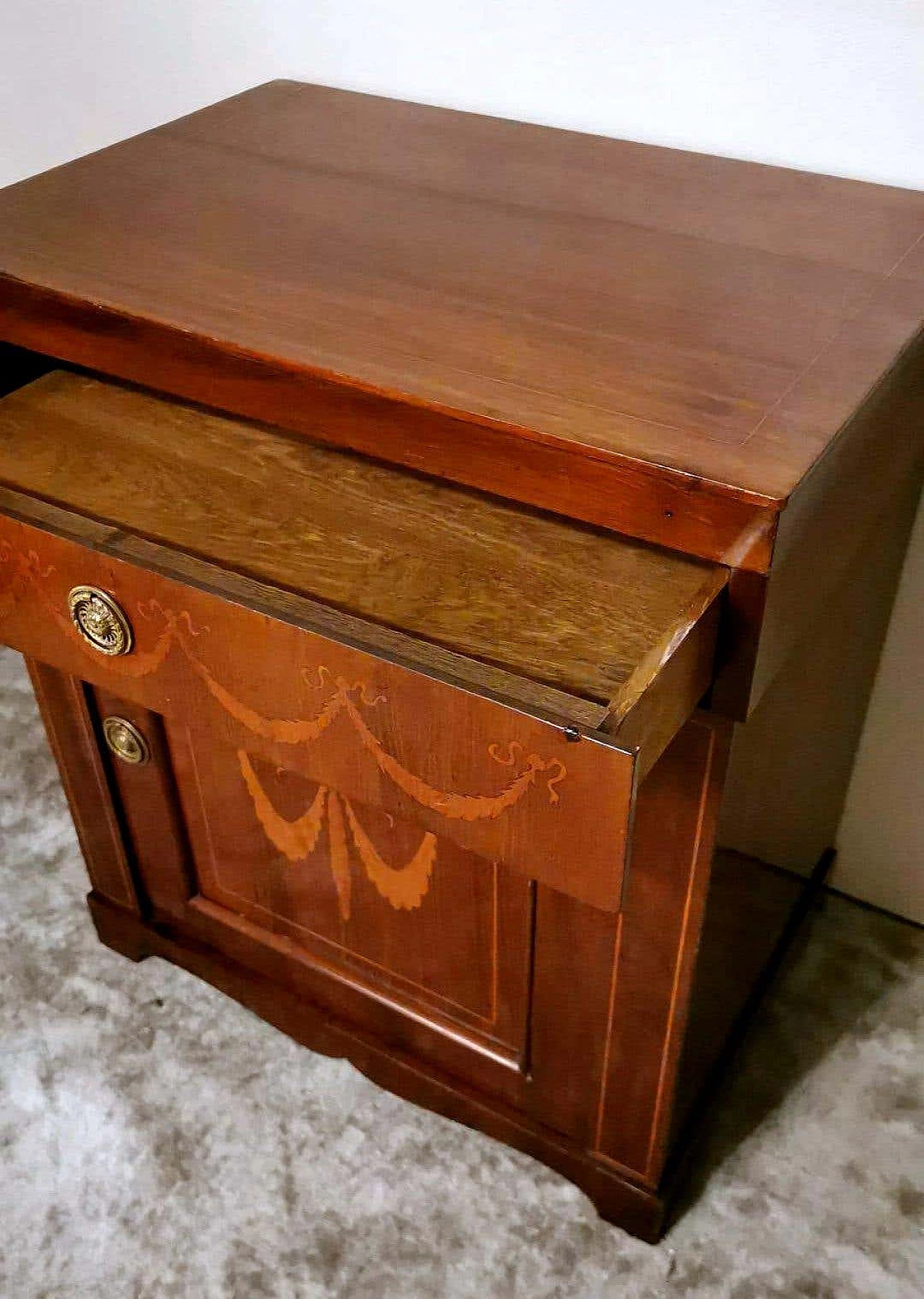

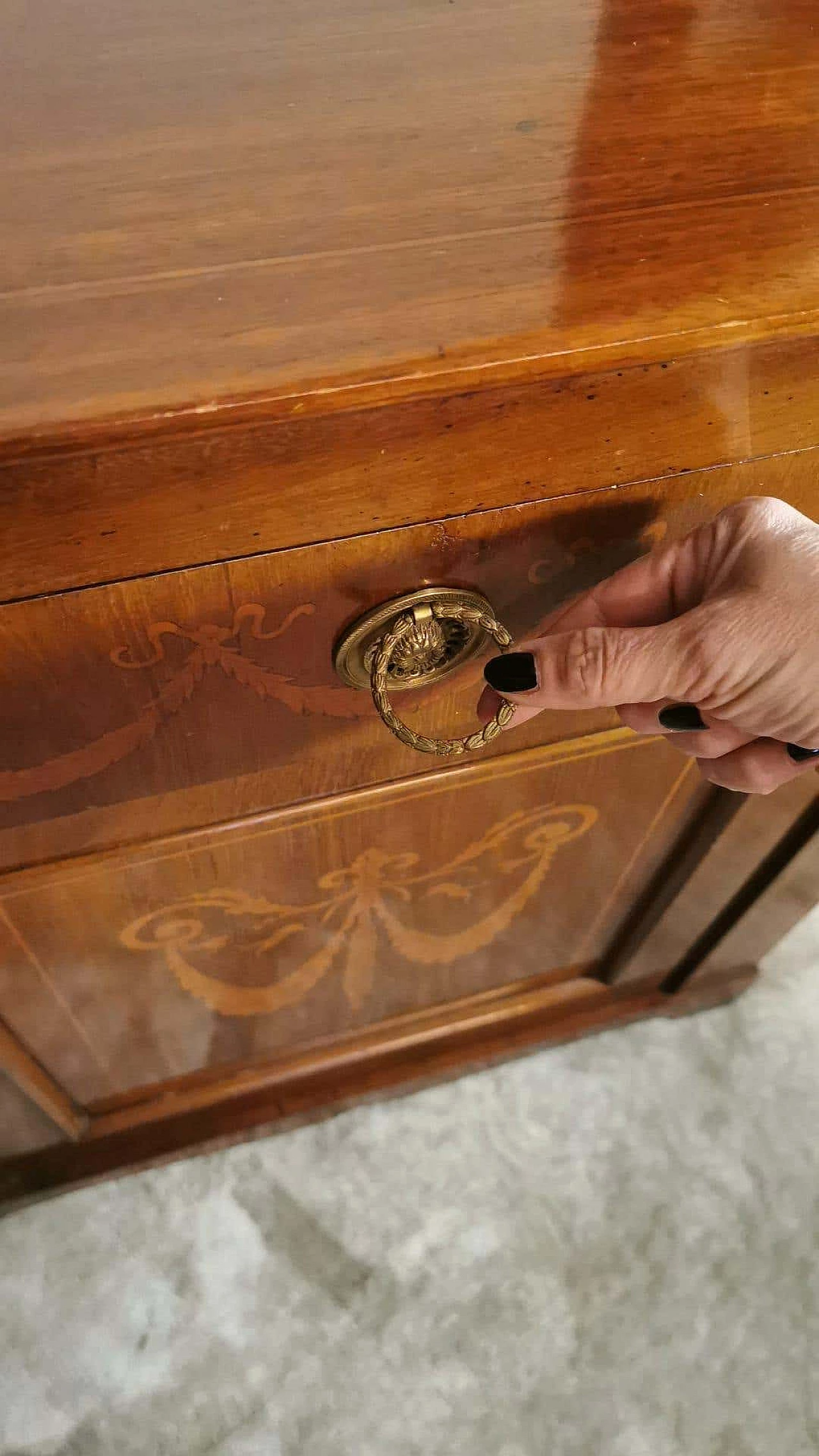
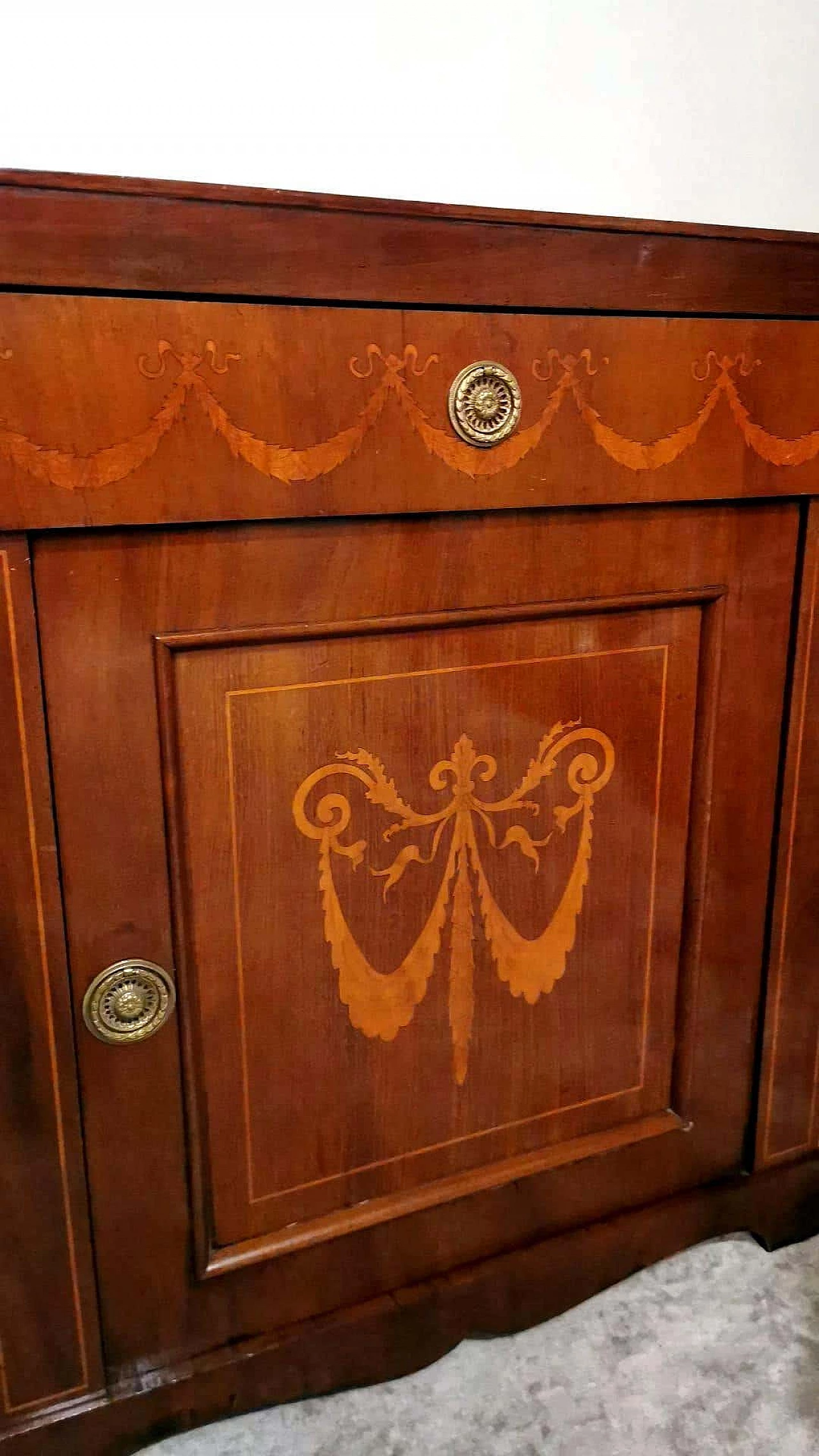
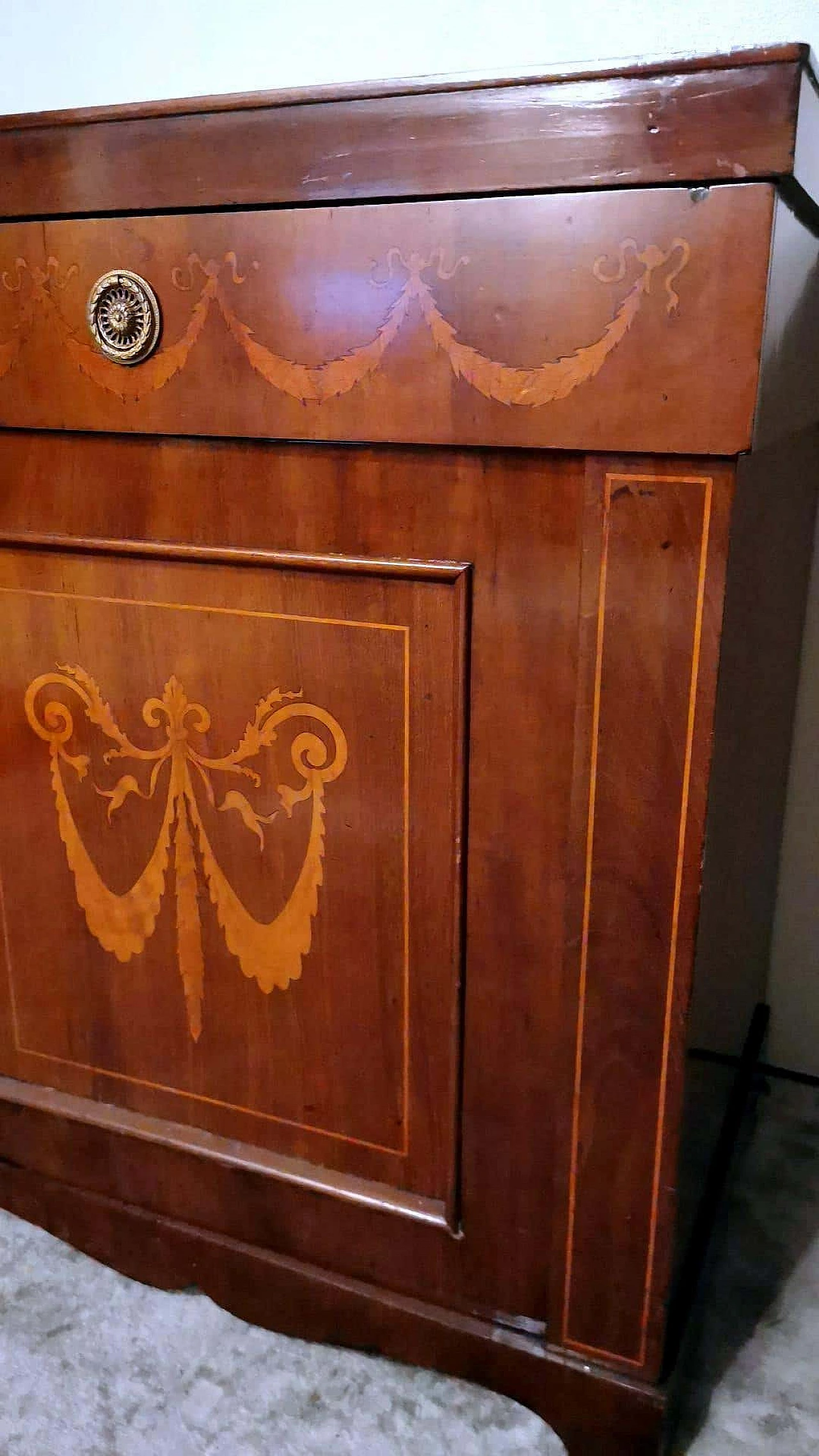
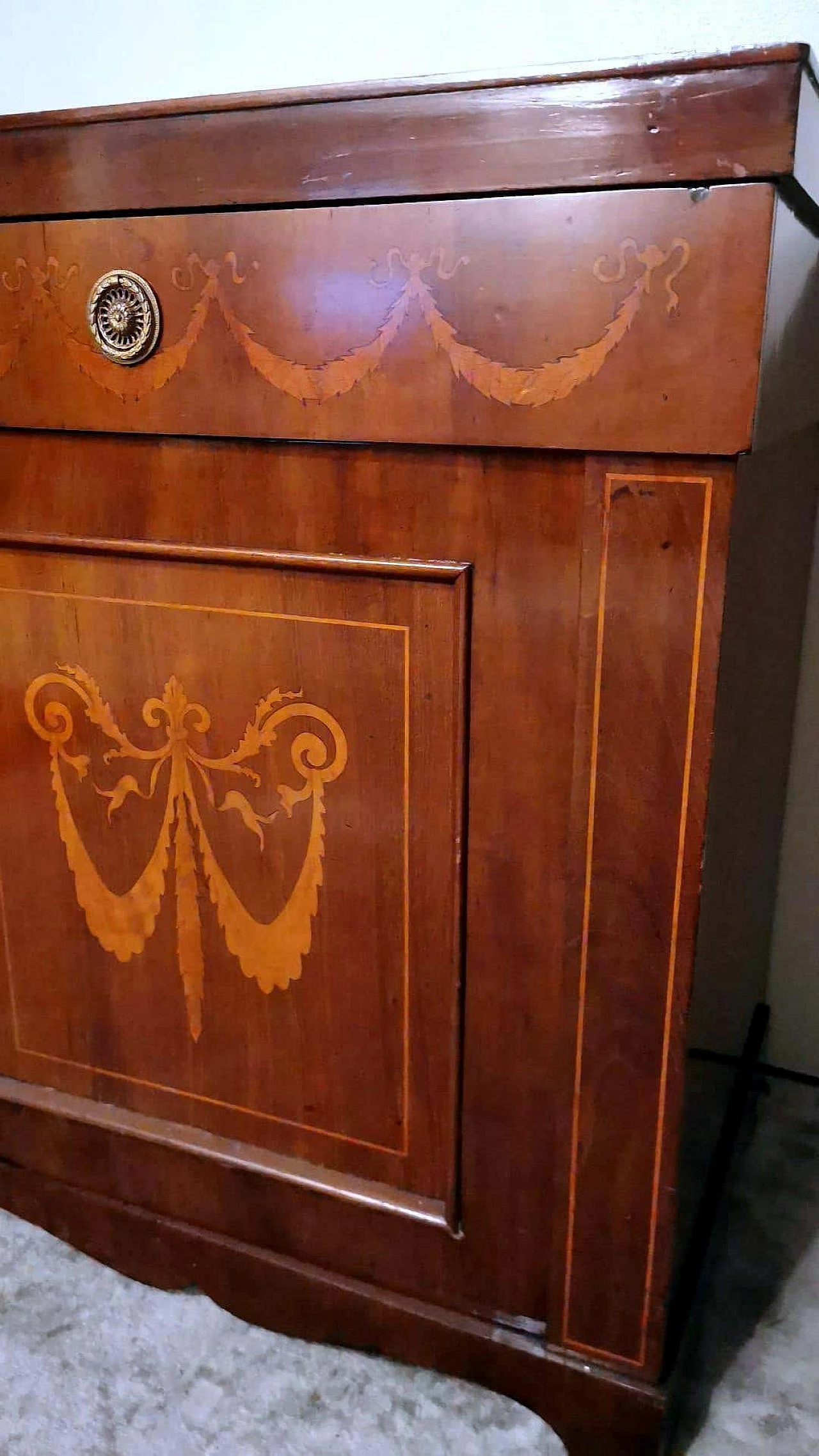

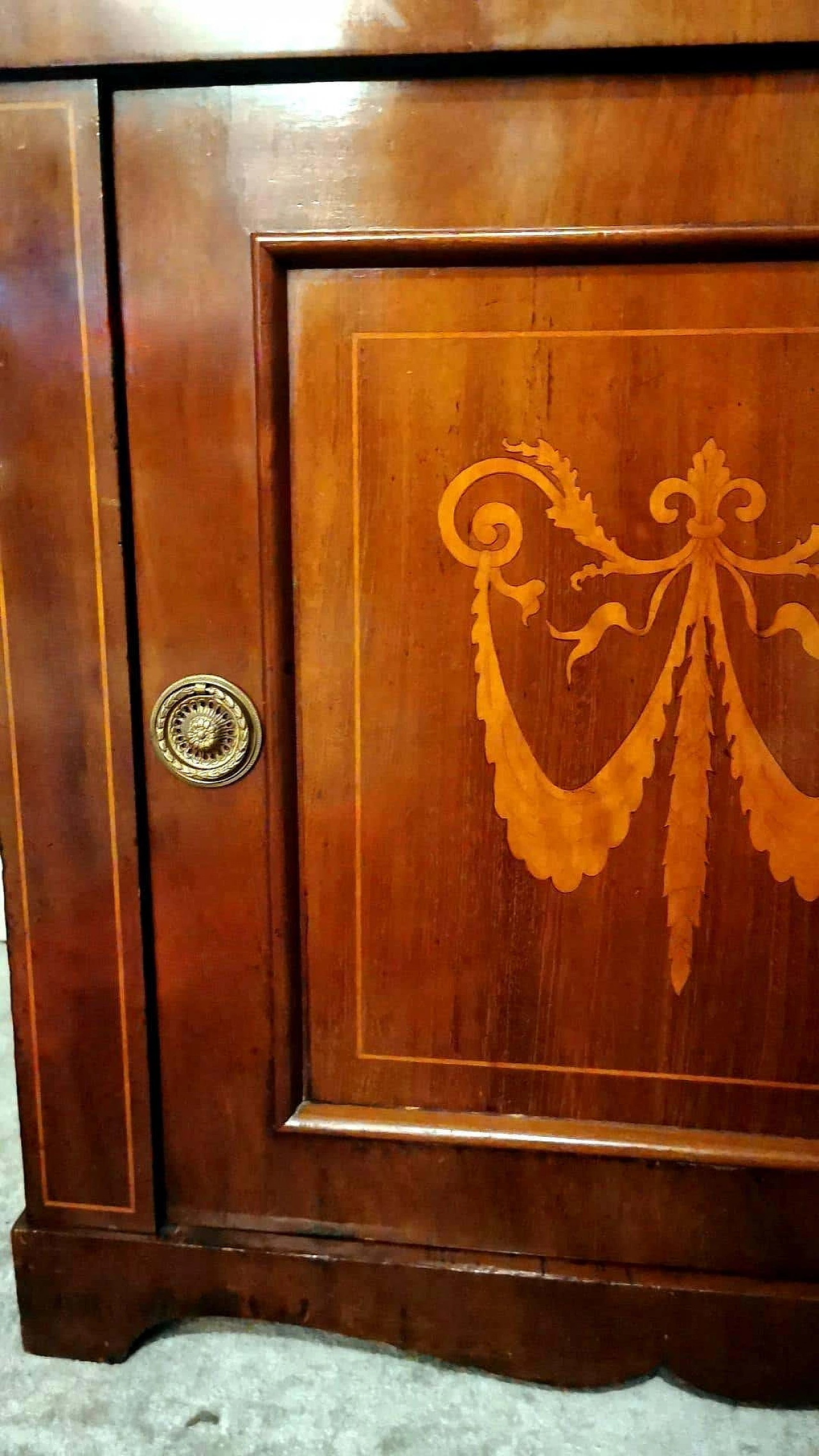
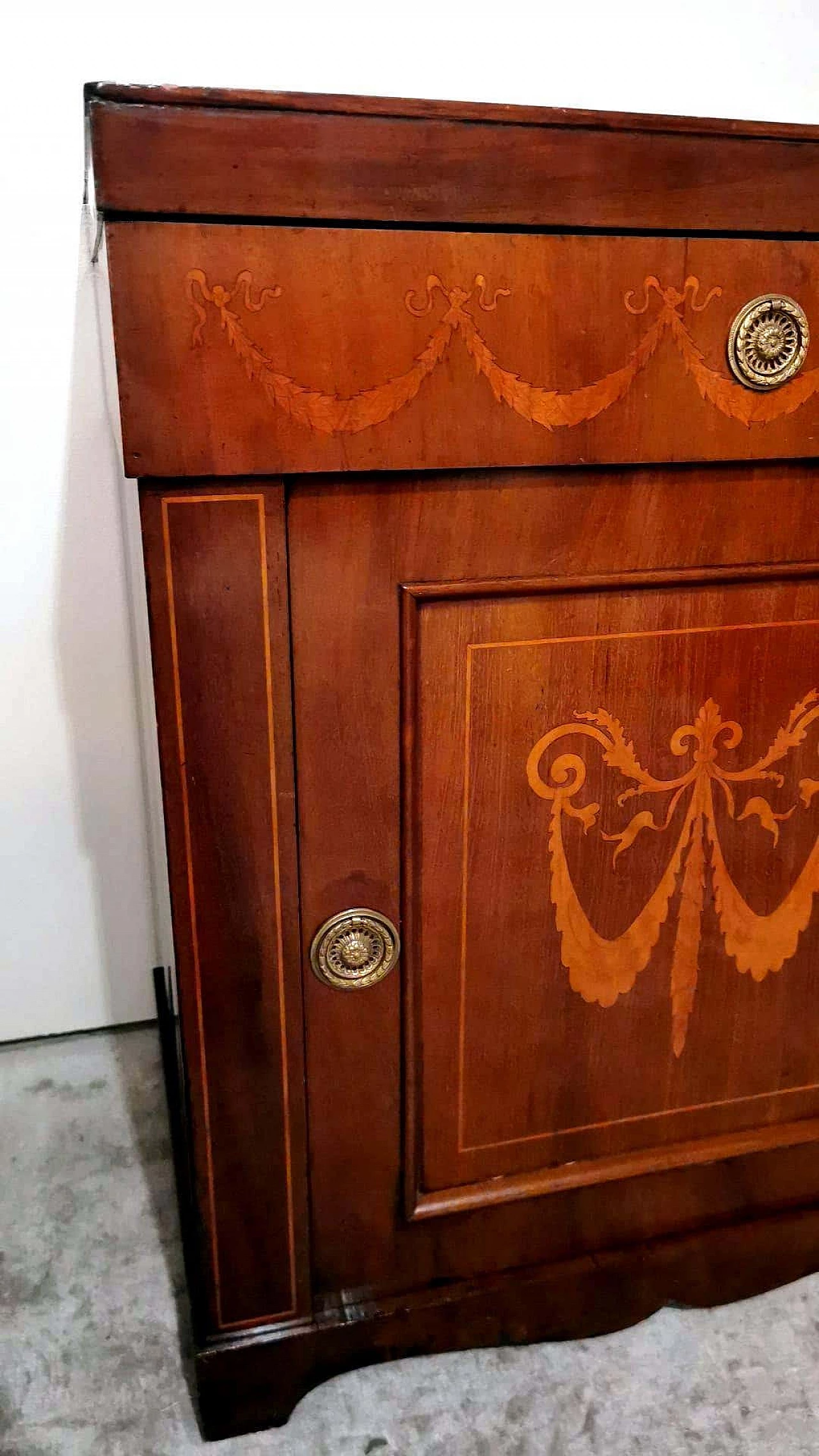
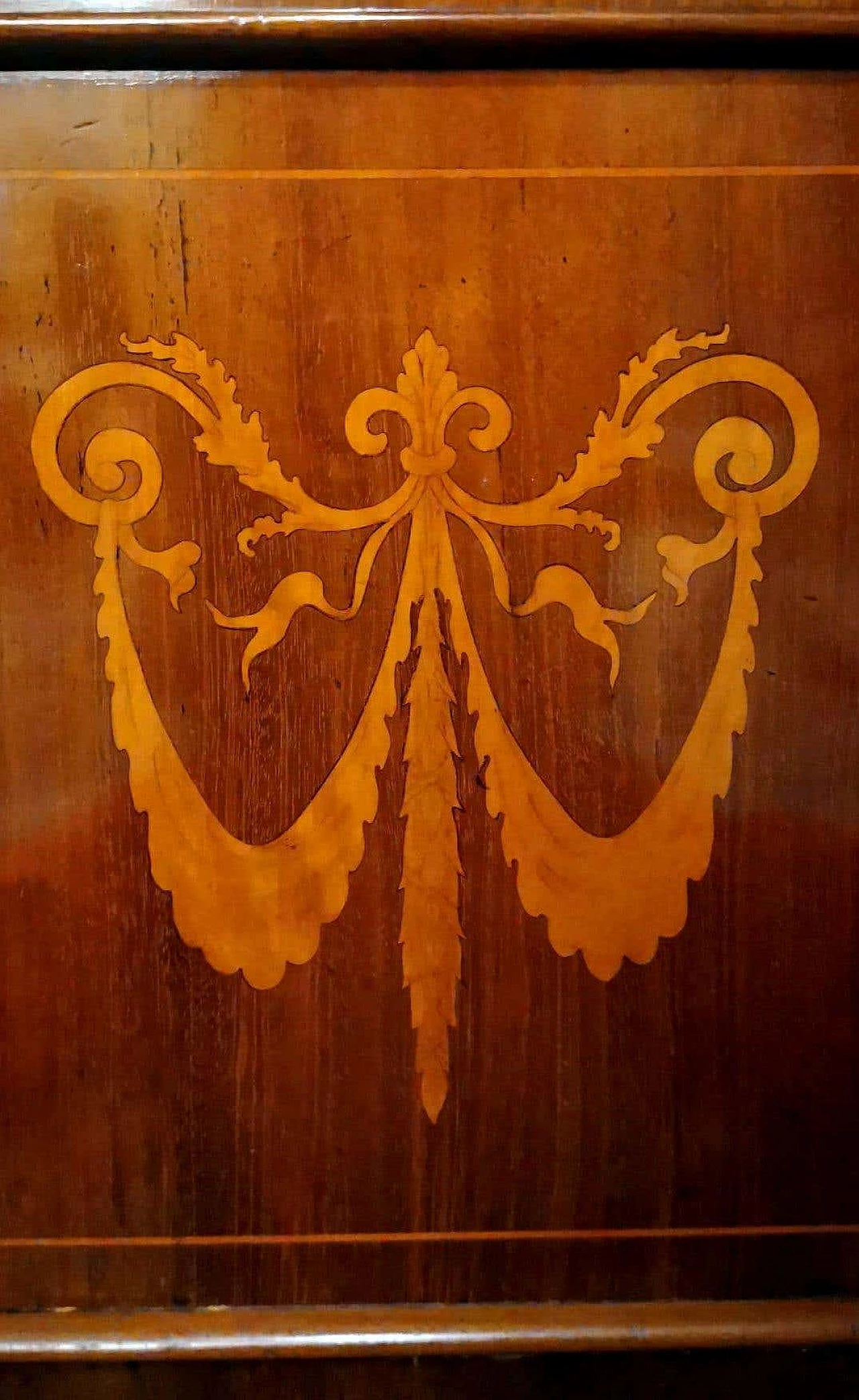
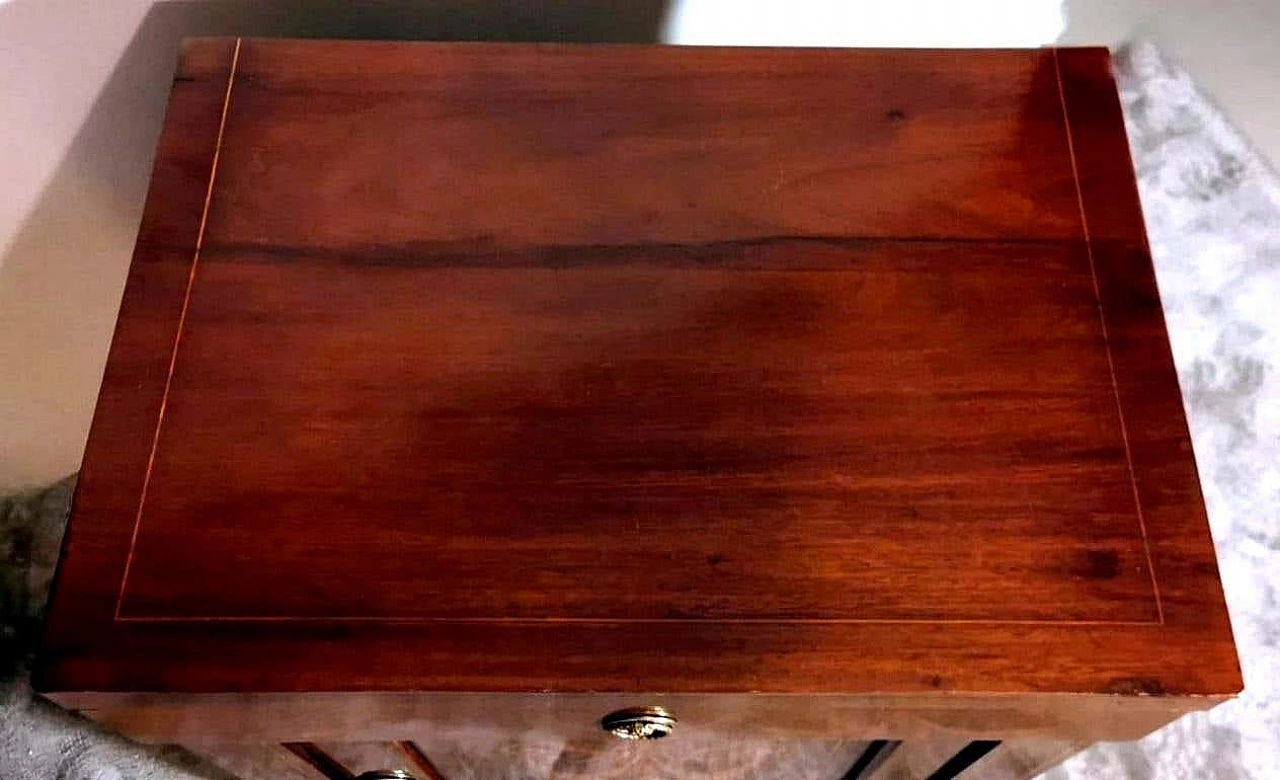
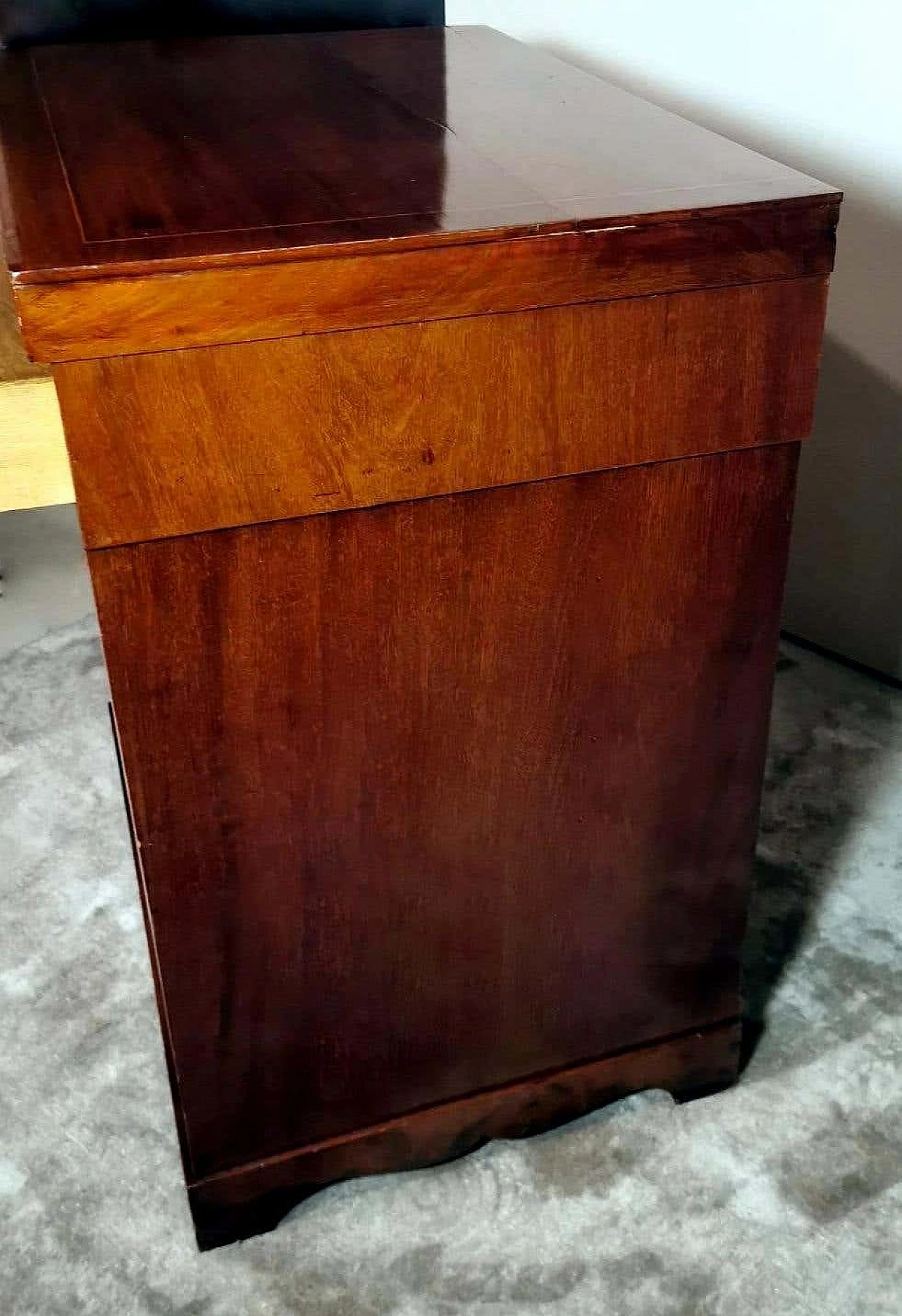

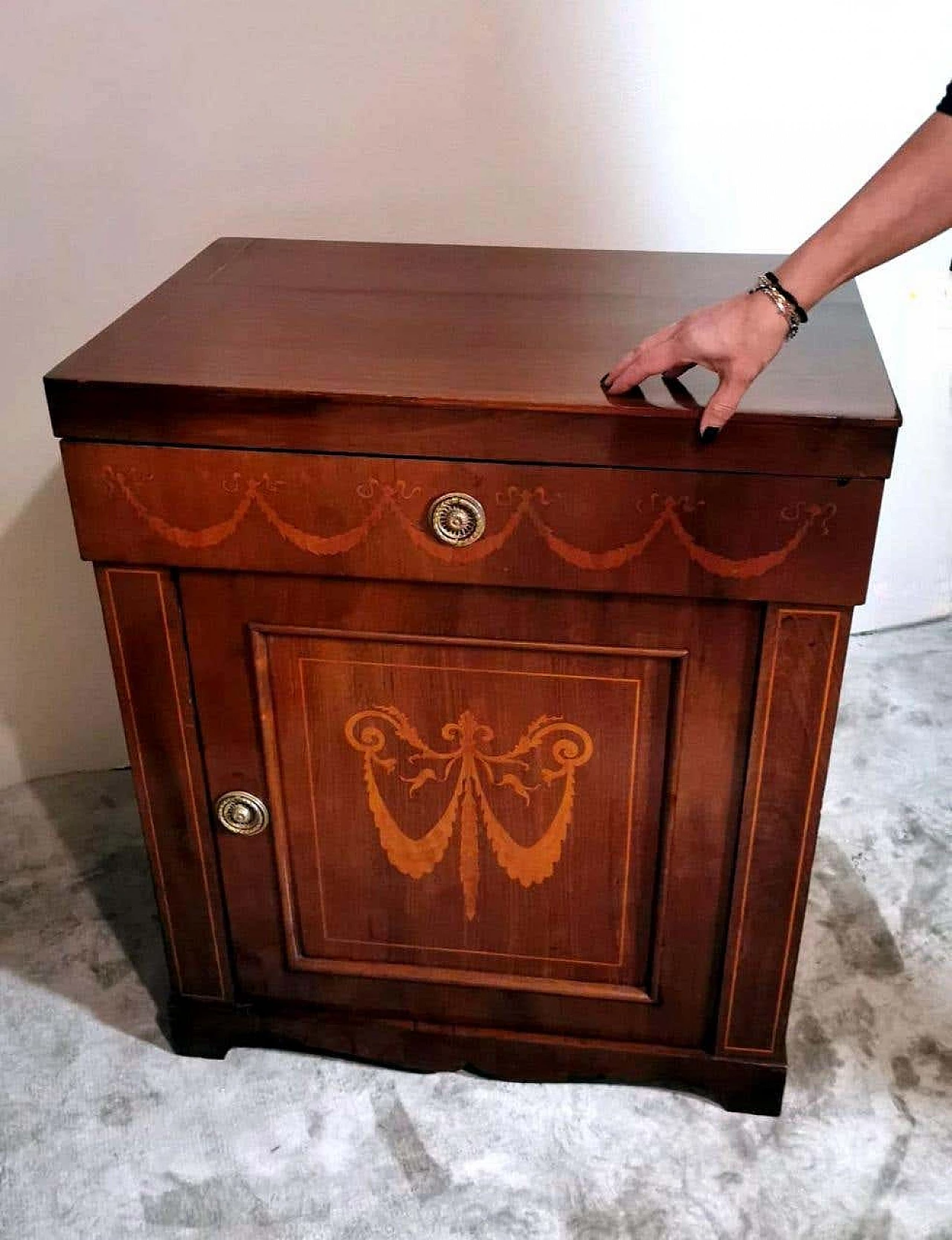
 SILVER Seller in Prato, Italy
SILVER Seller in Prato, Italy






.png)






-Photoroom-thumb.webp)
